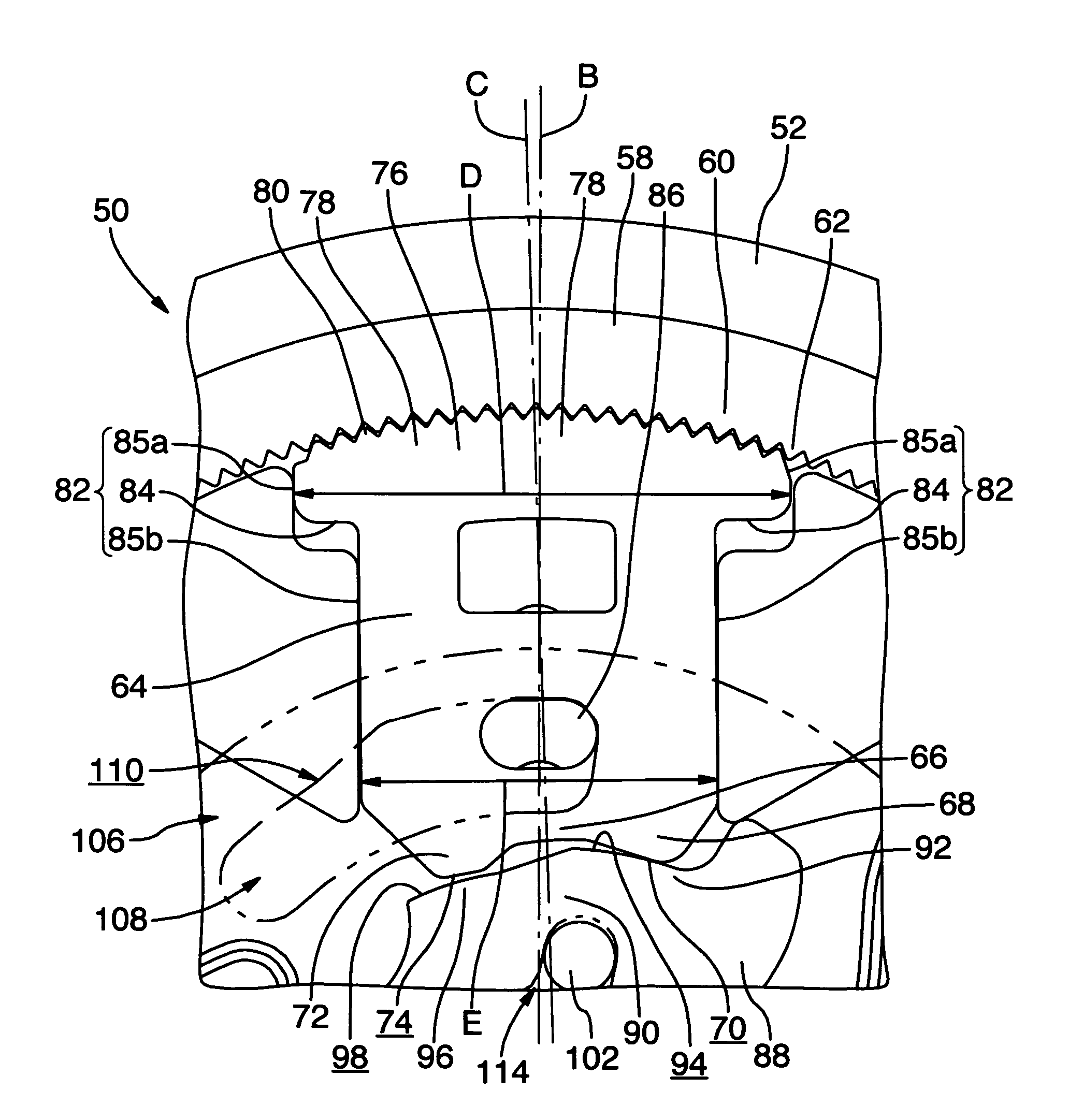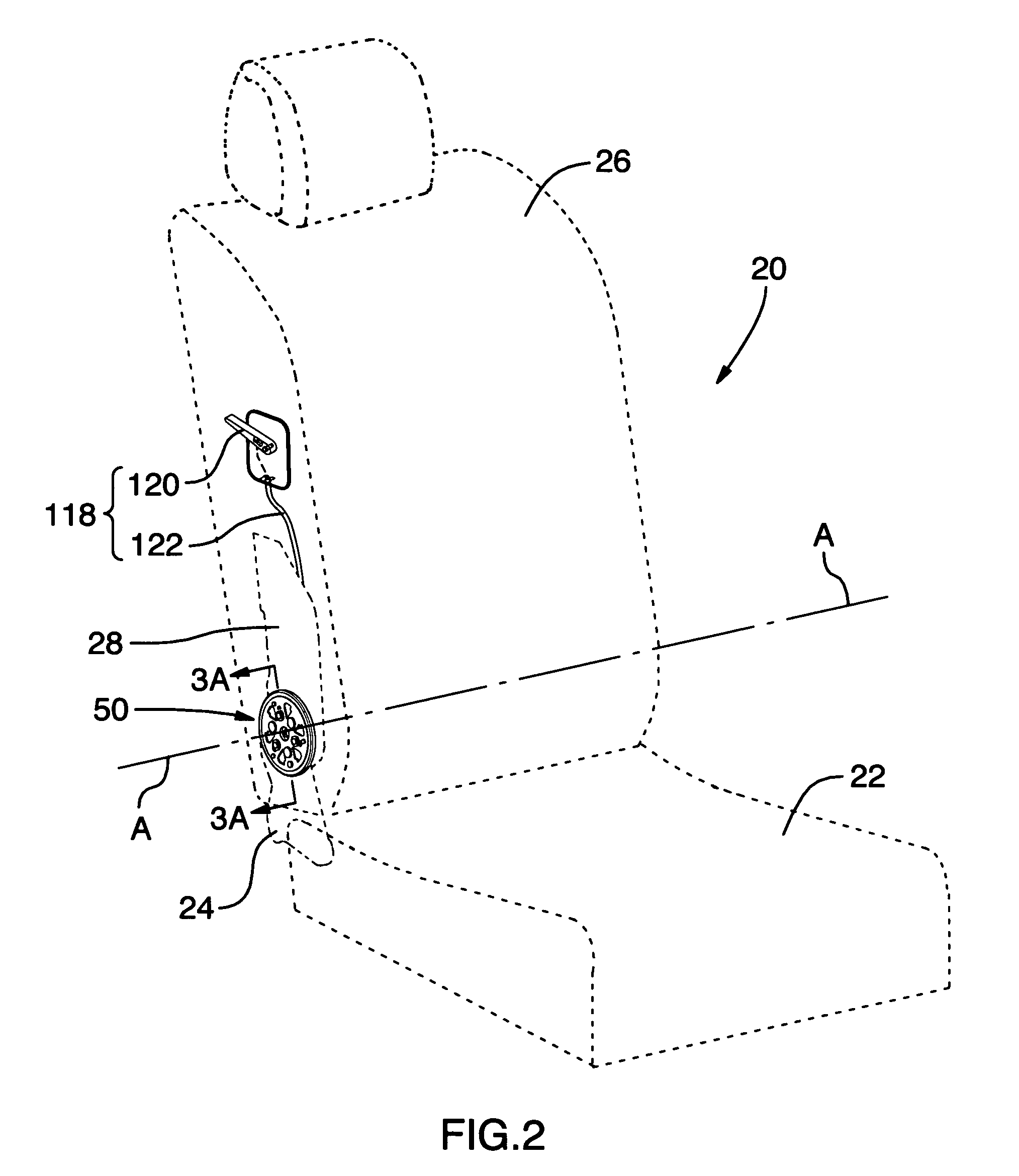Rotary recliner mechanism for use with a vehicle seat assembly
a technology of rotary recliner and vehicle seat, which is applied in the direction of vehicle seats, movable seats, vehicle arrangements, etc., can solve the problems of difficult mass production, troublesome recliner, and free play in the seat back
- Summary
- Abstract
- Description
- Claims
- Application Information
AI Technical Summary
Benefits of technology
Problems solved by technology
Method used
Image
Examples
Embodiment Construction
[0033]Generally, in the prior art, and with general reference to FIG. 1, rotary recliners 30 have heretofore included a fixed plate 31 rotatably supporting a mobile plate 33. Typically, the fixed and mobile plates 31, 33 have respectively been mounted on a vehicle seat cushion and a seat back (not shown). Relevant portions of one such prior art rotary recliner 30 are shown in FIG. 1. The rotary recliner 30 shown in FIG. 1 includes a rotatable cam 36 that is engagable with an inner end 38 of a pawl 37. As shown in FIG. 1, the pawl 37 is supported between guides 32 provided on the fixed plate 31, and each pawl 37 includes a toothed gear segment 39. In the prior art, the toothed gear segment 39 has been designed to be selectively and securely engagable with a corresponding toothed ring gear 34 provided on the mobile plate 33. As described in greater detail elsewhere herein, however, it has thus far been difficult to ensure the desired locking of the mobile plate 33 relative to the fixe...
PUM
 Login to View More
Login to View More Abstract
Description
Claims
Application Information
 Login to View More
Login to View More - R&D
- Intellectual Property
- Life Sciences
- Materials
- Tech Scout
- Unparalleled Data Quality
- Higher Quality Content
- 60% Fewer Hallucinations
Browse by: Latest US Patents, China's latest patents, Technical Efficacy Thesaurus, Application Domain, Technology Topic, Popular Technical Reports.
© 2025 PatSnap. All rights reserved.Legal|Privacy policy|Modern Slavery Act Transparency Statement|Sitemap|About US| Contact US: help@patsnap.com



